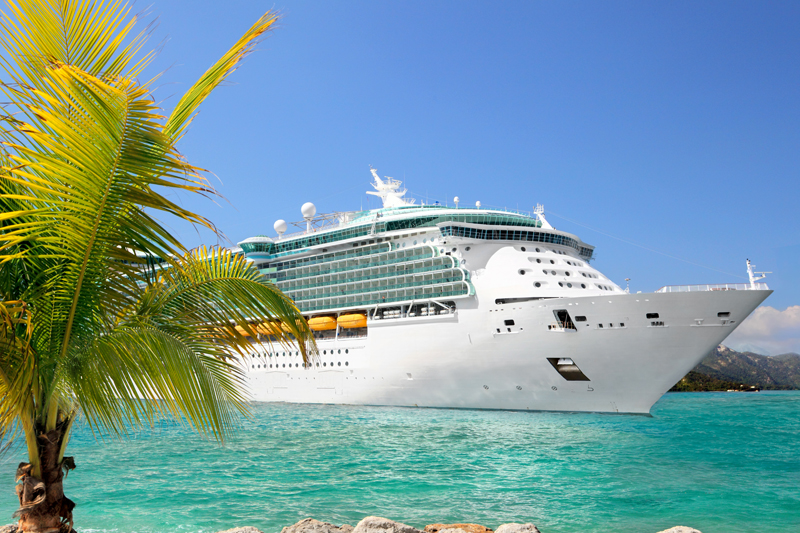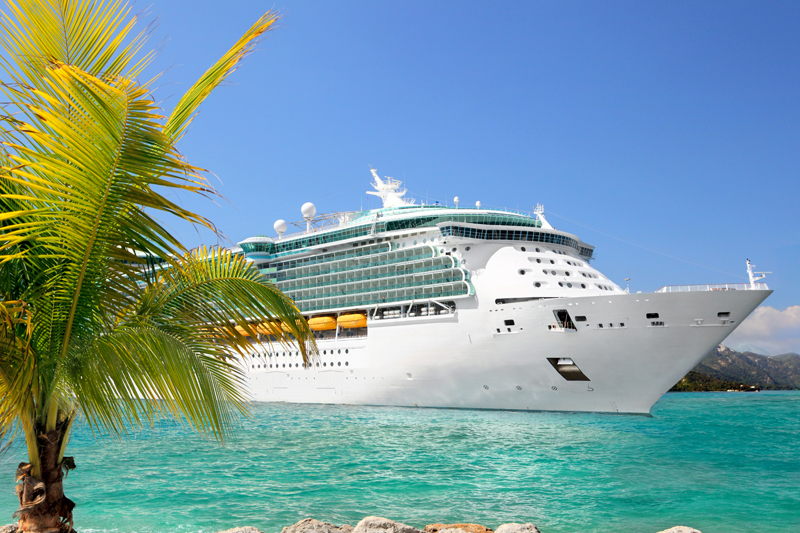Managing Your Money On A European Cruise

It’s important to think about overseas purchasing options and how to best manage your money before embarking on a European cruise. Steps must be taken in advance to make sure you’ll be able to use your credit cards and ATM card overseas. In addition, it’s wise to safeguard your cards and have some local currency on hand before arriving at your hotel or cruise ship.
Here are seven tips for managing your money and making sure your credit and ATM cards are ready for your upcoming European cruise.
1. Contact Your Credit Card Companies. Credit cards are one of the safest ways to pay for items while you are traveling. Call your credit card companies several days before departure to let them know that you'll be traveling, your dates of travel, and the destinations that you will be visiting. By contacting the credit card companies in advance to make sure they are aware of your travel, you’ll ensure that your credit card will be available for use and your purchases will go through. Make sure to include countries you’ll be connecting through, just in case you miss your connecting flight and have to stay there overnight.
Credit card companies monitor your charges and if anything out of the ordinary appears, such as your card number being used in Europe, the credit card company will refuse the charges and put a lock on your account. Once this happens, you will not be able to use the card for purchases. While contacting your credit card companies, check to see if they impose any additional fees for using your credit cards internationally. If so, make a list of the charges for each card. This will help you to determine which card(s) to use. You may want to apply for a credit card that does not impose international fees well in advance of your trip.
2. Get a Chip-and-PIN or Chip-and-Signature Card. Most credit card readers in Europe operate on a chip-and-PIN system. Cardholders in Europe put their cards into a small slot in the payment machine and then enter their PIN while the card stays in the slot. There is no receipt provided with these payment machines since the chip inside the card authorizes the transaction. In the United States, chip cards being provided are usually chip-and-signature cards that use your signature to prove your identity rather than a PIN. Chip-and-signature cards usually work in Europe, with some payment machines providing a receipt for your signature. Generally most U.S. credit cards will work if there is a cashier available to help with the transaction. In some cases though, payment machines may require a PIN. If you have an old magnetic-stripe card, try to get a chip-and-PIN or chip-and-signature card before you leave for your trip. If you have a chip-and-signature card, ask your bank for your card's PIN just in case it's needed. Banks will not provide your card's PIN over the phone. It usually must be sent through the mail. All of this will likely to take several weeks to more than a month, so make sure to allow plenty of time to complete this process.
3. Keep A Copy of Your Credit Card Information. Make sure you keep a copy of your credit card numbers and contact information with you, just in case one or all of your cards are lost or stolen. Leave your list of credit card numbers in the safe in your room. If there's any problem with a lost or stolen card, consult your list and call the credit card company so you can immediately have your credit card blocked. If you are planning to bring along an ATM card on your cruise, make sure you have this information as well.
4. Learn About Credit Card Policies In The Countries You Will Be Visiting. Be aware of the currencies and foreign exchange rates for every country to which you’ll be traveling. In some areas, it may be customary to add a 3-10% surcharge on any items purchased with a credit card. You may also find that some cards, such as Visa or MasterCard, are accepted more readily than others. Sites with large forum areas, such as TripAdvisor.com, can be a good source of information on generally accepted credit card practices in the regions you'll be visiting.
5. Contact Your Bank About Your ATM Card. If you're planning to bring an ATM card along to use on your European cruise, contact your bank in advance and let them know where you’ll be traveling. Banks will block ATM cards being used internationally unless they have received prior notification. Some banks may require a personal visit to authorize ATM cards for overseas use, so make sure to check in advance. Make sure to include countries you’ll be connecting through, just in case you miss your flight and have to stay there overnight. Check on the safety and availability of ATM outlets as well. It’s often wisest to withdraw money at a monitored bank location.
6. Research Options Available On Your Ship. Some ships have ATM machines available onboard. Find out if your ship has one and make sure to check on any fees involved in advance. Before withdrawing money from a shipboard ATM on your European cruise, find out if the funds will be provided in American dollars, Euros, or another type of currency. Cruise passengers sometimes access shipboard ATM machines in Europe hoping to get their funds in Euros, only to find that the cash is provided in American dollars instead.
7. Carry Some Cash. When traveling internationally, it's wise to expect the unexpected and be prepared. Carry some cash with you on your trip, just in case your credit cards don't work for some reason or your ATM card gets accidentally swallowed by a machine. Some travelers prefer to order Euros or other local currency from their bank before departing for their trip. If you're planning to do so, start making the arrangements at least a week in advance of your trip. If you're bringing U.S. dollars on your trip, make sure they are crisp new bills without any markings on them. Merchants in some countries will not accept old, worn or marked currency.
Here are seven tips for managing your money and making sure your credit and ATM cards are ready for your upcoming European cruise.
1. Contact Your Credit Card Companies. Credit cards are one of the safest ways to pay for items while you are traveling. Call your credit card companies several days before departure to let them know that you'll be traveling, your dates of travel, and the destinations that you will be visiting. By contacting the credit card companies in advance to make sure they are aware of your travel, you’ll ensure that your credit card will be available for use and your purchases will go through. Make sure to include countries you’ll be connecting through, just in case you miss your connecting flight and have to stay there overnight.
Credit card companies monitor your charges and if anything out of the ordinary appears, such as your card number being used in Europe, the credit card company will refuse the charges and put a lock on your account. Once this happens, you will not be able to use the card for purchases. While contacting your credit card companies, check to see if they impose any additional fees for using your credit cards internationally. If so, make a list of the charges for each card. This will help you to determine which card(s) to use. You may want to apply for a credit card that does not impose international fees well in advance of your trip.
2. Get a Chip-and-PIN or Chip-and-Signature Card. Most credit card readers in Europe operate on a chip-and-PIN system. Cardholders in Europe put their cards into a small slot in the payment machine and then enter their PIN while the card stays in the slot. There is no receipt provided with these payment machines since the chip inside the card authorizes the transaction. In the United States, chip cards being provided are usually chip-and-signature cards that use your signature to prove your identity rather than a PIN. Chip-and-signature cards usually work in Europe, with some payment machines providing a receipt for your signature. Generally most U.S. credit cards will work if there is a cashier available to help with the transaction. In some cases though, payment machines may require a PIN. If you have an old magnetic-stripe card, try to get a chip-and-PIN or chip-and-signature card before you leave for your trip. If you have a chip-and-signature card, ask your bank for your card's PIN just in case it's needed. Banks will not provide your card's PIN over the phone. It usually must be sent through the mail. All of this will likely to take several weeks to more than a month, so make sure to allow plenty of time to complete this process.
3. Keep A Copy of Your Credit Card Information. Make sure you keep a copy of your credit card numbers and contact information with you, just in case one or all of your cards are lost or stolen. Leave your list of credit card numbers in the safe in your room. If there's any problem with a lost or stolen card, consult your list and call the credit card company so you can immediately have your credit card blocked. If you are planning to bring along an ATM card on your cruise, make sure you have this information as well.
4. Learn About Credit Card Policies In The Countries You Will Be Visiting. Be aware of the currencies and foreign exchange rates for every country to which you’ll be traveling. In some areas, it may be customary to add a 3-10% surcharge on any items purchased with a credit card. You may also find that some cards, such as Visa or MasterCard, are accepted more readily than others. Sites with large forum areas, such as TripAdvisor.com, can be a good source of information on generally accepted credit card practices in the regions you'll be visiting.
5. Contact Your Bank About Your ATM Card. If you're planning to bring an ATM card along to use on your European cruise, contact your bank in advance and let them know where you’ll be traveling. Banks will block ATM cards being used internationally unless they have received prior notification. Some banks may require a personal visit to authorize ATM cards for overseas use, so make sure to check in advance. Make sure to include countries you’ll be connecting through, just in case you miss your flight and have to stay there overnight. Check on the safety and availability of ATM outlets as well. It’s often wisest to withdraw money at a monitored bank location.
6. Research Options Available On Your Ship. Some ships have ATM machines available onboard. Find out if your ship has one and make sure to check on any fees involved in advance. Before withdrawing money from a shipboard ATM on your European cruise, find out if the funds will be provided in American dollars, Euros, or another type of currency. Cruise passengers sometimes access shipboard ATM machines in Europe hoping to get their funds in Euros, only to find that the cash is provided in American dollars instead.
7. Carry Some Cash. When traveling internationally, it's wise to expect the unexpected and be prepared. Carry some cash with you on your trip, just in case your credit cards don't work for some reason or your ATM card gets accidentally swallowed by a machine. Some travelers prefer to order Euros or other local currency from their bank before departing for their trip. If you're planning to do so, start making the arrangements at least a week in advance of your trip. If you're bringing U.S. dollars on your trip, make sure they are crisp new bills without any markings on them. Merchants in some countries will not accept old, worn or marked currency.

Related Articles
Editor's Picks Articles
Top Ten Articles
Previous Features
Site Map
Content copyright © 2023 by Nancy Schretter. All rights reserved.
This content was written by Nancy Schretter. If you wish to use this content in any manner, you need written permission. Contact Nancy Schretter for details.







